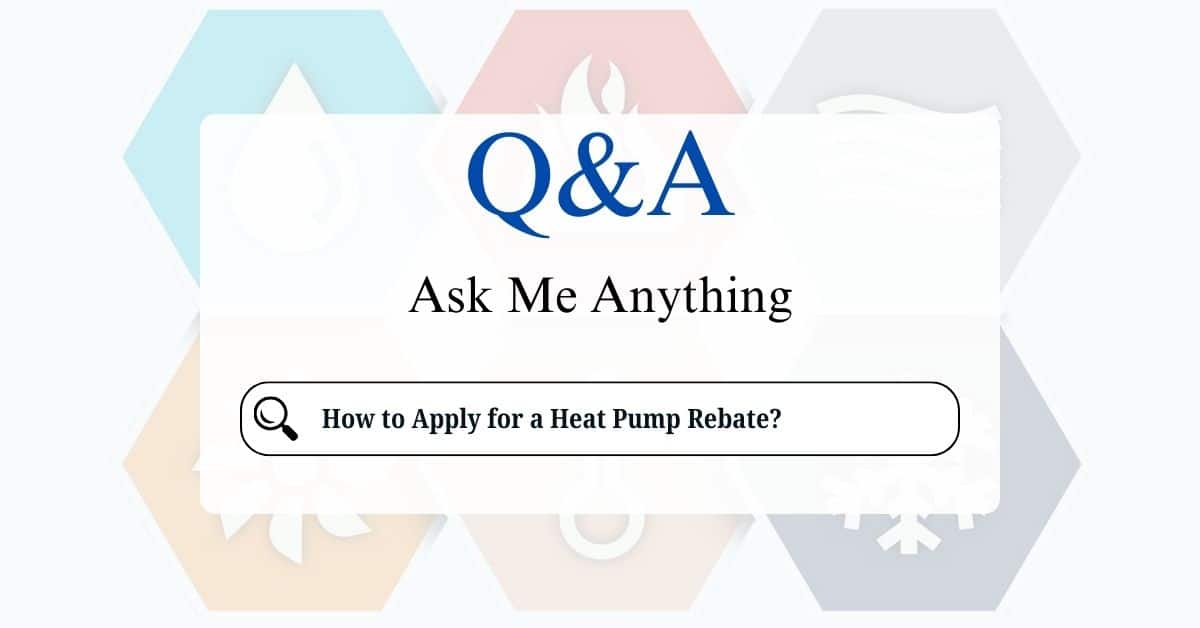Upgrading to a heat pump is a smart move for both your wallet and the environment. These efficient systems offer year-round heating and cooling, and to encourage their adoption, many regions offer rebates and incentives. This friendly guide will walk you through the process of applying for heat pump rebates, helping you maximize your savings.
What is Heat Pump Rebates?
Heat pump rebates are financial incentives offered by various organizations to help offset the cost of purchasing and installing a new heat pump system. These rebates can come from several sources:
- Federal Government: The federal government offers tax credits for qualifying energy-efficient home improvements, including heat pumps. While not technically rebates, these credits can significantly reduce your tax liability.
- State Governments: Many state governments offer rebates or other incentives for heat pump installations, often through energy efficiency programs.
- Local Utilities: Your local electric or gas utility company may also offer rebates for upgrading to a heat pump.
- Manufacturers and Retailers: Sometimes, heat pump manufacturers or retailers offer their own rebates or discounts.
Key Steps to Take
Before you start the application process, there are a few important things to do:
- Research Available Rebates: Identify all the potential rebates you might be eligible for. Check the websites of your state energy office, local utility companies, and the Energy Star website.
- Ensure Your Heat Pump Qualifies: Rebates often have specific requirements for the type and efficiency of the heat pump. Look for Energy Star certified models, as these often meet the necessary criteria. Check the specific program requirements for details on SEER (Seasonal Energy Efficiency Ratio), HSPF (Heating Seasonal Performance Factor), and other efficiency ratings.
- Hire a Qualified Contractor: Many rebate programs require that the heat pump be installed by a licensed and certified HVAC contractor. This ensures the installation is done correctly and safely.
- Gather Necessary Documentation: You’ll need to gather certain documents to support your rebate application. These typically include:
- Proof of purchase (receipt or invoice)
- Installation invoice from your HVAC contractor
- Manufacturer’s specifications or energy guide for the heat pump
- Proof of residence (utility bill or property tax statement)
- Any required permits or inspection reports
The General Rebate Application Process
While the specific application process can vary depending on the program, here’s a general outline:
- Complete the Application Form: Most rebate programs have an application form that you’ll need to fill out. This form will typically ask for information about you, your home, and the heat pump you installed.
- Submit Supporting Documentation: You’ll need to submit the documentation you gathered earlier along with your application form.
- Submit Your Application: You can usually submit your application online, by mail, or sometimes in person.
- Wait for Processing: After submitting your application, it will be reviewed and processed. This can take several weeks or even months, depending on the program.
- Receive Your Rebate: If your application is approved, you’ll receive your rebate. This may be in the form of a check, a credit on your utility bill, or a direct deposit.
Tips for a Smooth Rebate Application Process
- Read the Instructions Carefully: Pay close attention to the instructions and requirements for each rebate program.
- Submit All Required Documentation: Make sure you include all the necessary documentation with your application. Incomplete applications can be delayed or rejected.
- Keep Copies of Everything: Make copies of all your application materials and supporting documentation for your records.
- Apply Promptly: Some rebate programs have limited funding or deadlines, so it’s best to apply as soon as possible after your heat pump is installed.
- Follow Up If Necessary: If you haven’t heard back about your application within the expected timeframe, don’t hesitate to follow up with the program administrator.
Federal Tax Credits vs. Rebates
It’s important to distinguish between federal tax credits and rebates:
- Tax Credits: These reduce your tax liability directly. You claim them when you file your federal income tax return.
- Rebates: These are direct payments or credits you receive after purchasing and installing qualifying equipment.
You can often combine federal tax credits with state and local rebates for even greater savings.
By following these steps and tips, you can navigate the heat pump rebate application process with confidence and maximize your savings while enjoying the comfort and efficiency of your new system. Remember to check with official sources for the most accurate and up-to-date information on available rebates in your area.






